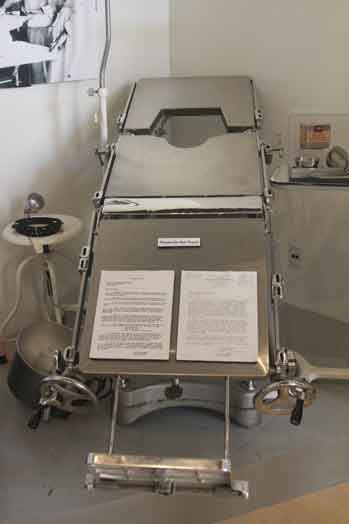Recently my husband and I were on a trip to Oregon and we stumbled upon the Oregon State Hospital Museum of Mental Health in Salem. It was filled with reminders of how much psychiatry has progressed. The lobotomy tables are now relegated to being objects of history, although the same can’t fully be said of electroconvulsive therapy (ECT) however the way it is administered has improved. We found the people there very helpful and informative and we discovered, to our amazement, that this was where the movie “One Flew Over the Cuckoo’s Nest” was filmed.
The woman we spoke to related how her father Dean Brooks had been progressive enough to allow for the filming of the movie on-site and to arrange for all the necessary permissions to be obtained. Apparently the novel had also been set at this same mental hospital. Before the filming started, the actors were allowed to observe the patients in group therapy and there daily routine. Jack Nicholson and Louise Fletcher were also allowed to watch ECT being administered to a patient.
A number of the patients were given behind the scenes jobs, so they assisted with the movie production. This was thought to be of benefit to their rehabilitation. Some of the doctors and nurses pretended to be patients that were walking in the grounds and so on. We purchased a video which described all the discussions leading up to the approvals being given and the details of the actual filming of the movie.
Although this movie was at the time controversial and shocking to many, it did help to begin the process of breaking down the stigma of mental illness. It allowed viewers to see that the patients of the mental asylum, despite their quirks and sometimes irrational behavior because of their illness, they were still loved by others. They were not people that should be locked up and forgotten and subject to inhumane treatment.
Fortunately today most people appreciate that mental illnesses can be treated and that no shame needs to be attached to admitting to suffering from them. This makes it easier for people to receive the help they need from psychiatric medications or counseling. But still more work needs to be done in removing the stigma. Educational programs being run by groups like NAMI – the National Alliance on Mental Illness are helping with this endeavor. Don’t ever let stigma stop you from getting the help you need.

